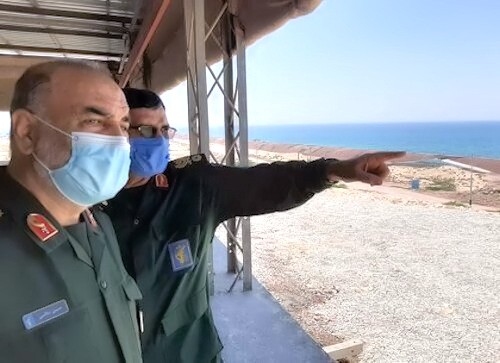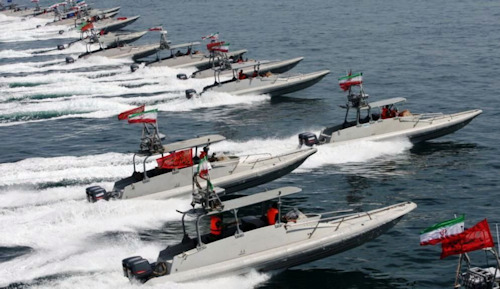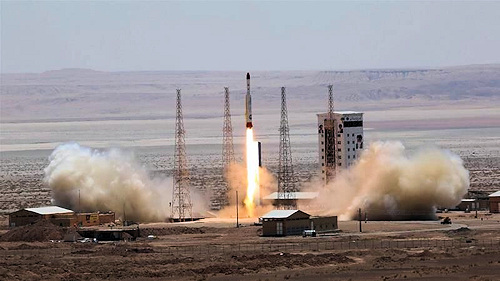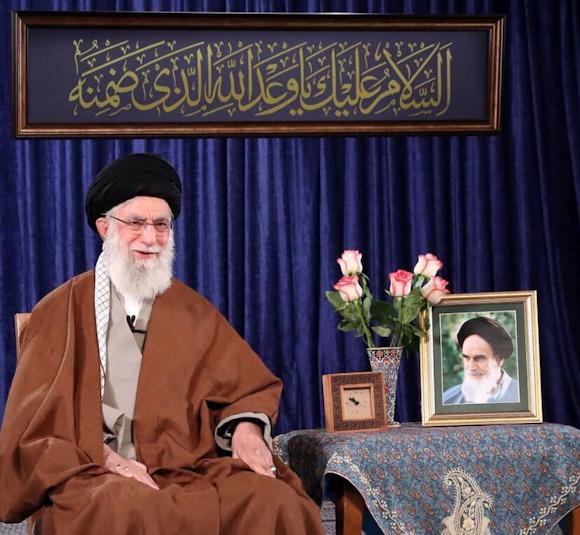Interpreting Iran cannot ignore the understanding of realities which, transversely, go through a religiosity imbued with practical aspects bound as always to economic factors and the exercise of force, together with the preservation of the religious-revolutionary identity of its political system: the statute.
- Ayatollah, as the only interpreters of the divine will, they exercise political power according to a principle discussed within part of the same Shiite community which criticizes the concept of velayat-e faqih1 on which the Islamic Republic is based, and which speculates that the clergy, financed by the khums2, and that evaluates political and social dynamics as security problems, becomes a class aimed at defending its privileges against the vekalat, the representative political system.
The contrast between the two Shiite theological schools remains fundamental, that of Qom, prone to pragmatic intervention, and that quietist Najaf, of substantially opposite sign, but not for this detached from the regional political context. Deus vult? No to transcendence: it is incompatible with the materialism with which the international dynamics are imbued, which, even in Iran, cannot wait for the return, at the end of time, of the 12th Imam. It would be interesting to have an Iranian version of "The Name of The rose”, With an Echo even more attentive to a realpolitik that persuaded Khomeini himself to accept the end of hostilities with Iraq.
A summary of Iranian political thought resides in the FFAA which, according to Khamenei, "relying on Allah the Exalted and ... on national power, allowed... to defeat the US in achieving its main goal in the region. " Tehran, while suffering the sense of American encirclement and trying to destabilize its opponents, has not given up on being a regional strategic power, and has played a role in the fall of Saddam, in the Syrian war, in the rise and withdrawal of ISIS and in the conflict Yemeni, giving substance to a block consisting of non-state actors but capable interpreters of a Axis of resistance anti-american3, an aggregate not exclusively Shiite that does not neglect the possibility of using Sunni forces adverse to the Great Satan and able to increase regional penetration.
 Starting from a defense a mosaic with many centers Pasdaran e Artish4 autonomous for command and control, and with the Navy with one layered defense with maximum firepower at each stage, Strategic Doctrine provides for the combination of conventional and non-conventional forces, based primarily on deterrence and retaliation. This strategy is unlikely to change anytime soon, given the technological inferiority; however, since 2016, Iran has shown itself proactive in defending the territory and foreign interests both with small-scale missions, and by resorting to propaganda and operations proxy.
Starting from a defense a mosaic with many centers Pasdaran e Artish4 autonomous for command and control, and with the Navy with one layered defense with maximum firepower at each stage, Strategic Doctrine provides for the combination of conventional and non-conventional forces, based primarily on deterrence and retaliation. This strategy is unlikely to change anytime soon, given the technological inferiority; however, since 2016, Iran has shown itself proactive in defending the territory and foreign interests both with small-scale missions, and by resorting to propaganda and operations proxy.
The Iranian deterrence is based on three foundations: long-range ballistic missiles, naval forces capable of threatening navigation in the Gulf and Strait of Hormuz, and unconventional operations by means of foreign partners.
The war with Iraq has underlined the importance of strategic depth and war self-sufficiency, areas considered priority; Iran has developed its doctrine to face the West by implementing asymmetries aimed at targeting enemy vulnerabilities: intolerance to victims and excessive technological dependence.
The modern Iranian war can be read on several levels hard e soft evaluating the importance that the Ayatollahs attach to all aspects of state power: diplomacy, economics, psychology, expansion of the spectrum of threats no longer restricted only to the USA and Israel, transition to forms of active deterrence; despite technologically lower, Artish in the last decades it has substantially progressed by continuing to use unconventional asymmetric capacities and strengths proxy aimed at hitting an opponent perceived as superior.
La Come on Qods5 of the Revolutionary Guard guides the projection of power through unconventional methods, while Artesh, the traditional army highlights niche skills and tactics guerrilla style against more advanced opponents, with a sizeable arsenal of ballistic missiles designed to overwhelm US forces and their regional partners.
 The swarm tactic with a thin ship, with a strong supply of mines and an arsenal of anti-ship missiles can interrupt maritime traffic in the Strait of Hormuz, a strategic point of global trade. Each of these forces is demonstrating resilience, reactivity and regional projection, albeit in shape expeditionary limited, but with the forecast of the end of the UN embargo that could allow a reconfiguration according to traditional chrisms of Forces based on an ideology that does not limit the use of the means to defense, but also to the affirmation of Jihad. It is not excluded that the dichotomy of the military instrument between Artish (strong about 450.000 men) e Pasdaran (which with the Basij reserve reaches about 640.000 units) create friction, since each FA finds its clone in the IRGC6: despite the coordination, rivalries remain fueled by unequal access to political areas and financial resources, for which the IRGC enjoys a greater percentage of the budget, manages numerous private companies, such as the construction headquarters of Khatemolanbia7 and leverage its ascendant to increase additional revenue, such as smuggling.
The swarm tactic with a thin ship, with a strong supply of mines and an arsenal of anti-ship missiles can interrupt maritime traffic in the Strait of Hormuz, a strategic point of global trade. Each of these forces is demonstrating resilience, reactivity and regional projection, albeit in shape expeditionary limited, but with the forecast of the end of the UN embargo that could allow a reconfiguration according to traditional chrisms of Forces based on an ideology that does not limit the use of the means to defense, but also to the affirmation of Jihad. It is not excluded that the dichotomy of the military instrument between Artish (strong about 450.000 men) e Pasdaran (which with the Basij reserve reaches about 640.000 units) create friction, since each FA finds its clone in the IRGC6: despite the coordination, rivalries remain fueled by unequal access to political areas and financial resources, for which the IRGC enjoys a greater percentage of the budget, manages numerous private companies, such as the construction headquarters of Khatemolanbia7 and leverage its ascendant to increase additional revenue, such as smuggling.
Iranian characteristic is therefore that of having two parallel and separate military systems: Artish, or regular forces aimed at external threats (Saudi, Israeli, Sunni radicals), and Pasdaran, intended inside; also the Iranian national police force8, commanded by a general Pasdaran, is considered part of the armed forces and, after the unrest at the end of 2017, saw a substantial increase in its budget, even exceeding what was assigned to the'Artesh.
The diplomatic / naval operational component, with Iran member of the Naval Symposium of the Indian Ocean has highlighted, in the face of severe maintenance deficiencies of the surface units, and with still in mind the very hard American lesson imparted in 1988 with the operation Praying Mantis, asymmetric and soft power capable of conducting activities outside the area, extending from the Mediterranean and the Bab al-Mandab Strait in the west to the Indian Ocean and in the east to the Strait of Malacca; added to this is the development of A2 / AD strategies9 based mainly on fast vehicles Pasdaran, on submarines Yono (North Koreans) e Kilo (Russians), on mines and anti-ship missiles Fateh.

The Defense Budget, after an increase from 2014 to 2018 following the JCPOA, registered a decrease in 2019 due to the renewal of US sanctions, the devaluation and insufficient economic management, with a forecast of further cuts caused by the decrease in oil exports . The new 2017 five-year plan, targeting a wider range of conventional capabilities, continues to prioritize missiles and naval forces, emphasizes the need to renew the obsolete air force now supported by Russian SAM systems, and focuses attention to development cyberespecially after the American hacker attack Stuxnet of 2010 to nuclear centrifuges, active against Israel in 2014, Saudi Aramco and Saudi authorities between 2016 and 2017.
Ballistic missiles are the strategic component of short and medium range primary deterrence, given the lack of a modern aeronautics, and follow in their use the principle of area saturation with multiple launches; do not underestimate the development of land attack cruise missiles, a genre of unique threat because they are capable of flying at low altitude and attacking a target from multiple directions: therefore, it should not be surprising either the recent launch of the satellite Young10 (photo) nor the effectiveness of the missiles and drones allegedly launched by the Huthi against the Saudi oil plants of Abqaiq and Khurais.
The sanctions prevented the modernization of the war apparatus from abroad, a problem which Tehran has remedied by investing in national infrastructures and capabilities. The nuclear temptation, dating back to the 70s, remains strong, and is related to both the Armament Plan Amad from the 90s11and to the fact that efforts have continued to develop adequate technology in Natanz, Isfahan, Bushehr and Qom. The American exit from the JCPOA and European politics led Iran to announce the expansion of uranium enrichment infrastructures unless sanctions are relaxed.
Also 'market has its relevance, with global operational capabilities by the 16 organizations in charge; to note the Denial & Deception technique12 aimed at reducing vulnerability according to the doctrine of the passive defense, which includes concealment, dispersion of force and highly mobile units associated with the largest underground facility program in the MO.
Iranian perspectives: to create a conventional force capable, using a mixture of conventional and non-conventional possibilities, enhancing the Air Force, the Navy and the missile component, with a maintenance of direct presence.
The Iranian landscape remains fluid and complex: the preservation of the prerogatives of the clergy collides with the internal socio-economic evolution and with the tangle of international relations; the exercise of power, indispensable for maintaining the status quo, binds the Ayatollahs to preserve parallel military apparatuses, with differently accentuated ideological connotations, and granting the component Pasdaran extensive freedoms and economic and business initiatives precluded to the military pure di Artish.
Solving the Iranian equation according to the current American paradigm is difficult, given history and culture. With a view to which the world, epidemics or not, continues to run, it is essential however to take into account possible evolutions inspired, in addition to the economic situation, also by a strong nationalism which, in ideological terms, would not disfigure in place of Ayatollah who, despite incarnating i signs of God, they have often found it necessary to give pragmatism to more earthly grounds.
1 Government of the jurisconsult
2 Tax on goods
3 Hezbollah in Lebanon, Asad in Syria, Huthi in Yemen, Hamas in Palestine.
4 The Iranian FFAA in Farsi
5 Holy City of Jerusalem
6 Islamic Republic Guard Corps
7 Seal of the Prophets
8 Law Enforcement Force
9 Anti access to the area
10 Luce, luckier than the previous Zafar (victory)
11 See Project 111 and the attempt to integrate a spherical load into the Shahab3 missile re-entry vehicle
12 D&D Denial and Deception
Photo: IRNA












